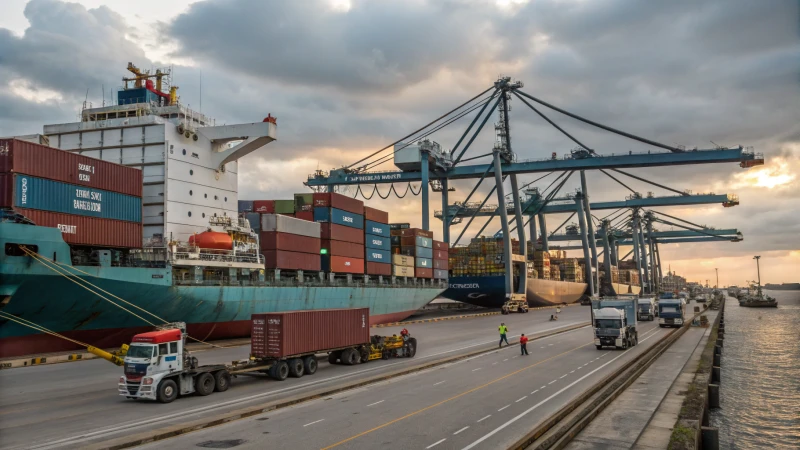Ever wondered why your packages from China seem to take forever? I totally get it.
Shipping delays from China often stem from container shortages, customs checks, port congestion, and logistical hurdles. These are compounded by Chinese holidays, weather, and surging demand.
I remember waiting anxiously for a shipment that seemed stuck in limbo. Understanding these delay factors, like the ones mentioned above, can feel like unraveling a mystery. But fear not—by diving deeper into each issue, you can gain insights and discover practical ways to sidestep future delays.
Container shortages are a major cause of shipment delays.True
Container shortages limit shipping capacity, delaying shipments.
Weather conditions rarely impact shipping times from China.False
Severe weather can disrupt logistics, causing shipment delays.
How Do Container Shortages Affect Shipping Times?
I remember the first time a shipment delay almost threw my entire business off balance. As I waited, anxiously checking updates, I realized how deeply container shortages impact shipping times.
Container shortages extend shipping times by causing logistical bottlenecks and port congestion, delaying global trade. This results in postponed delivery schedules and increased costs for businesses relying on imports and exports.
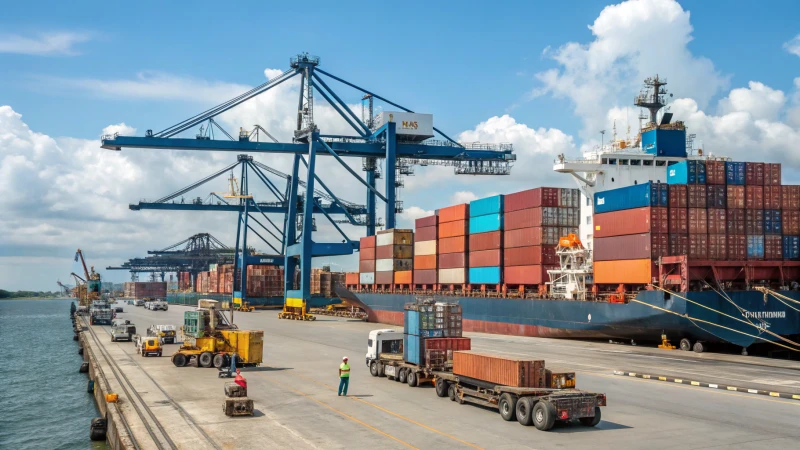
The Root Causes of Container Shortages
Imagine this: it's peak season, and suddenly everyone seems to want everything at once. That's part of what causes these container shortages. I've seen how a surge in demand can create chaos. For instance, more containers head out from China than return, leaving key locations desperately short.
Impact on Global Shipping Times
When containers are scarce, it's like trying to find a cab on a rainy day in New York City—nearly impossible and frustrating. Ports get jam-packed with vessels just waiting around for containers to become available. Add customs inspections1 into the mix, and it's a recipe for even longer delays.
Affected Industries and Regions
I know firsthand how industries like consumer electronics and automotive sectors are hit hardest by these delays. It's a nail-biter when you're waiting on that just-in-time delivery, especially if you're in a region with fewer logistical resources compared to major ports that can somewhat ease these issues.
Strategies to Mitigate Delays
In the face of these challenges, I've found that adapting is key. Diversifying supply chain routes or tapping into multimodal transportation options can really help. Some businesses, including mine, are investing in their own container fleets to sidestep availability issues. Exploring alternative logistics providers like Gofreighter2 has also opened up tailored solutions that make the whole ordeal a bit more manageable.
| Factors Leading to Delays | Description |
|---|---|
| Increased Demand | More goods shipped during peak seasons |
| Port Congestion | Limited space leading to vessel backlogs |
| Imbalance in Trade | More exports than imports from key regions |
Container shortages lead to port congestion.True
Scarcity of containers causes vessels to wait, congesting ports.
All industries are equally affected by container shortages.False
Industries relying on just-in-time delivery face more severe impacts.
Why do customs inspections often cause delays?
Have you ever wondered why your shipments seem to get stuck at customs, leaving you anxiously waiting?
Customs inspections delay shipments due to thorough document checks, physical inspections, and compliance verifications. These procedures ensure that goods meet legal standards, reducing potential risks in international trade.
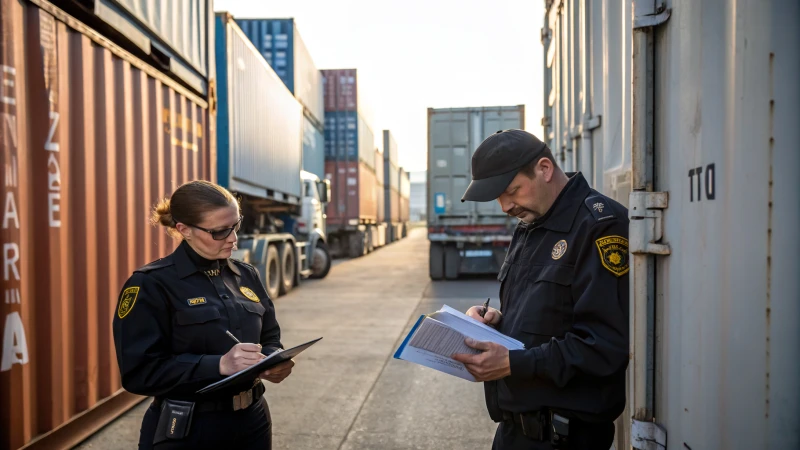
The Role of Documentation Verification
I remember a time when a single missing signature on a shipping document3 turned into a week's delay for one of my shipments. Customs authorities are incredibly meticulous—they have to be! They sift through documents like the bill of lading4 or commercial invoice with a fine-tooth comb, ensuring every detail is spot on. It’s a bit like piecing together a puzzle, but if one piece doesn’t fit, the whole picture stalls.
Ensuring that all paperwork is accurate and complete can significantly reduce the risk of delays. Here’s a quick cheat sheet for the most common documents:
| Common Documents | Purpose |
|---|---|
| Bill of Lading | Proof of shipment |
| Commercial Invoice | Details of sale |
| Packing List | Contents description |
Physical Inspection Protocols
And then there are the physical inspections. I had this one shipment, stuffed with gadgets from China, that got randomly selected for a physical check. Customs officers went through it like kids on a treasure hunt! This process can be time-consuming, especially if your goods are as diverse as mine.
These checks are crucial for maintaining trade integrity and catching any sneaky business. To dodge unnecessary delays, I always make sure to be as transparent as possible with detailed product descriptions5.
Compliance With Trade Regulations
Now, sticking to regulations is another biggie. Each country has its own rulebook, and keeping up can feel like cramming for an exam! Once, I overlooked a tiny regulation change, and it cost me a significant delay. That’s why staying informed about the latest customs regulations6 is now my top priority.
Sometimes, I even consult a customs broker7 to streamline the process. It's like having a trusted guide through a labyrinth.
By understanding these factors and preparing accordingly, businesses can better navigate the complexities of customs inspections and reduce associated delays. Educating staff on documentation and compliance can further enhance shipping efficiency and reliability. Keeping your team in the loop is like having extra hands on deck to keep everything shipshape!
Minor errors in documents cause customs delays.True
Even small mistakes in shipping documents can lead to extended inspections.
Random inspections are mandatory for all shipments.False
Random inspections are selective and not required for every shipment.
How Does Port Congestion Affect Shipment Delays?
Remember that time when my shipments were stuck at the port, turning my schedule upside down? Understanding port congestion can help avoid such nightmares.
Port congestion causes shipment delays by lengthening wait times for ships to dock, messing up schedules, and raising costs. Managing these delays is key to keeping your supply chain smooth.
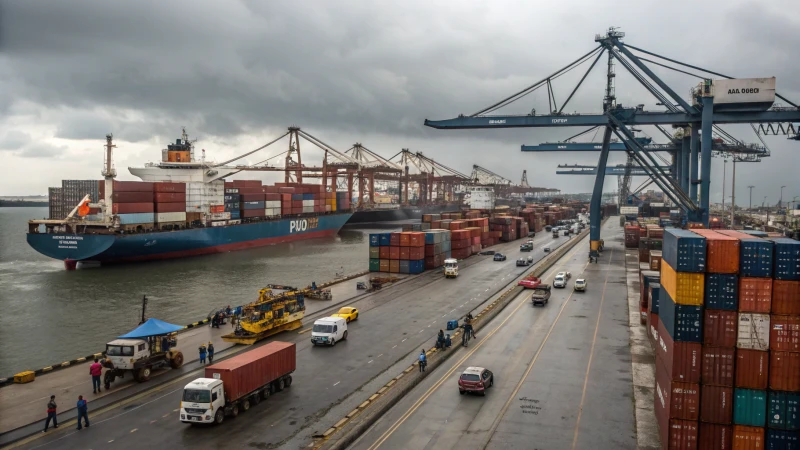
How Port Congestion Occurs
Ever watched a bustling harbor on a busy day? Picture this: ships lined up like cars in rush-hour traffic. Port congestion usually strikes when there are more ships than a port can handle. Think of it like trying to squeeze into a crowded subway during peak hours. This scenario worsens with global trade surges, limited infrastructure8, or unexpected hiccups like strikes or bad weather.
Impact on Shipment Schedules
I remember once I had to wait what felt like an eternity for my products to be unloaded because of this exact issue. It was a domino effect; the ships were delayed, and so was everything else down the line. When ships can't dock, it throws off entire schedules, like missing a flight connection and having your whole travel plan fall apart.
| Impact | Description |
|---|---|
| Increased Wait Times | Ships queue up, waiting for available berths. |
| Higher Costs | Holding costs rise due to extended docking times. |
| Schedule Disruptions | Delivery timelines are affected, impacting inventory levels. |
Economic Consequences
Beyond just being a logistical headache, port congestion means extra costs. Shipping companies may slap on congestion surcharges, which can sting when you're banking on timely deliveries. I’ve seen retailers9 face empty shelves, and manufacturers hit pause on production lines because raw materials arrived late.
Strategies for Mitigating Delays
To dodge these delays, I've found it helps to shake things up with logistics strategies. Sometimes, rerouting shipments to less crowded ports works wonders. Or tweaking the schedule to ship during quieter times can be a game-changer.
- Alternative Ports: Consider redirecting shipments to ports that are less busy.
- Flexible Schedules: Shipping during off-peak periods can cut down delays.
- Intermodal Solutions: Mix sea, rail, and road transport for more flexibility.
Leveraging tech like real-time tracking systems10 has been a lifesaver for me. It gives a clearer picture of where shipments are and lets you adjust plans on the fly to keep things moving smoothly.
Port congestion increases shipment costs.True
Port congestion leads to higher costs due to extended docking times.
Using alternative ports eliminates shipment delays.False
Alternative ports reduce but do not eliminate shipment delays entirely.
How Do Documentation Errors Delay Your Shipments?
Ever watched your shipment get stuck in limbo because of a tiny error on a document? It's more common than you'd think, and it can be quite a headache.
Documentation errors can stall your shipments by triggering customs holds or misrouting. Ensuring accuracy in documents like invoices and bills of lading is key to avoiding delays and unexpected costs.
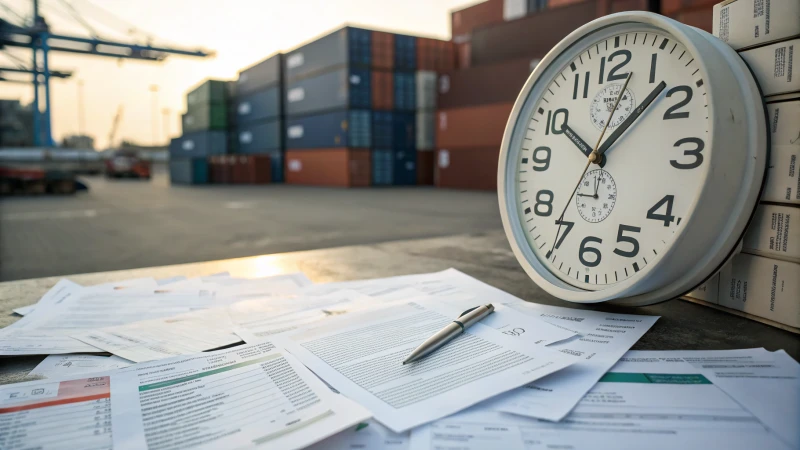
I remember the time when a simple typo nearly turned my entire operation upside down. It was just one wrong digit on an invoice, but it caused customs to hold a shipment for days. I learned quickly that the devil is indeed in the details when it comes to shipping documents.
Common Documentation Errors
Believe it or not, it's the little things that can trip you up—like typos, missing info, or incorrect details in crucial documents like commercial invoices11 and bills of lading. These seemingly minor mistakes can snowball into customs rejections or hefty fines, which nobody wants.
| Error Type | Impact |
|---|---|
| Typos | Misrouting or customs issues |
| Missing Info | Delays in clearance |
| Incorrect Details | Fines or shipment holds |
Impact on Supply Chain
When shipments get delayed, it feels like a domino effect ripples through the supply chain. Inventory shortages become a real issue, and let's not even talk about the stress of trying to keep customers satisfied under such conditions. The increased logistics costs12 from storage fees or last-minute expedited shipping can really add up too.
Strategies to Prevent Errors
I've found that implementing thorough checks and using digital tools for managing documents can significantly cut down on these errors. Training staff on international shipping regulations13 has also been crucial.
- Digital Tools: Automated systems help cross-check data for accuracy.
- Staff Training: Regular updates on shipping guidelines can minimize mistakes.
Understanding the nuances of shipping documentation is essential for minimizing errors and ensuring smooth logistics operations. Keeping documents accurate not only speeds up processing but also helps avoid unexpected additional costs14. Trust me, it makes all the difference.
Typos in shipping documents cause customs rejections.True
Typos can lead to misrouting or customs issues, delaying shipments.
Digital tools increase documentation errors.False
Digital tools help reduce errors by automating data checks for accuracy.
How Do Chinese Public Holidays Affect Shipping?
Have you ever experienced the ripple effect of Chinese public holidays on your shipping schedules? It's a challenge many of us in global trade face!
Chinese public holidays, like Golden Week and Chinese New Year, disrupt shipping by causing factory shutdowns, reduced workforce availability, port congestion, and spiking costs due to schedule changes and demand surges.
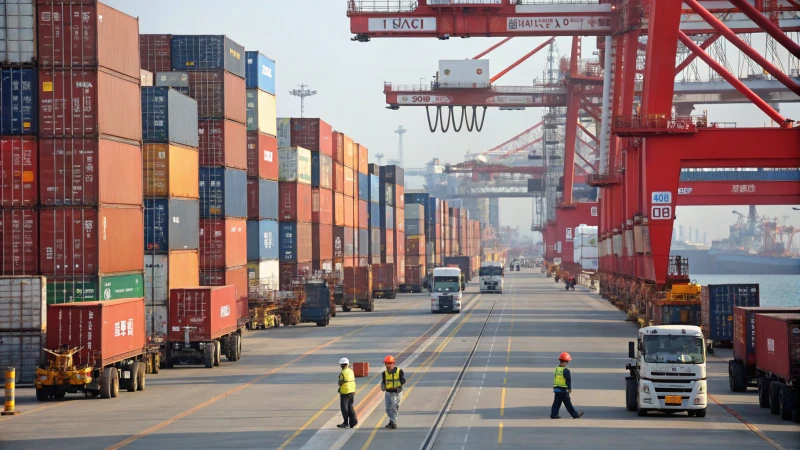
Understanding Key Chinese Holidays
I've often found myself planning around China's major public holidays like Golden Week15 and Chinese New Year16. These times bring widespread factory closures. It’s like someone hit pause on production timelines, with factories sometimes closing for up to two weeks. This can lead to quite the scramble in fulfilling orders.
- Golden Week: Typically in early October, this holiday sparks a massive wave of domestic travel and a noticeable dip in production.
- Chinese New Year: Kicking off in late January or early February, this celebration sees workers returning home, putting operations on hold.
Effects on Shipping Schedules
During these periods, I've seen shipping schedules take a hit. Port congestion becomes a real headache with limited staff to manage the backlog. It's not uncommon to have vessels queued for days, just waiting to load or unload containers.
| Holiday | Impact |
|---|---|
| Golden Week | Port congestion |
| Chinese New Year | Reduced workforce |
Increased Costs and Demand Spikes
Ah, the cost spikes! Before these holidays, there's always a rush for shipping services, driving up prices because of the limited vessel space. I've learned the hard way that companies will often pay premiums just to secure space, which can really shake up the logistics budget.
And let's not forget the delays post-holidays as factories slowly gear back up to full speed. All these factors play into how I plan inventories and set shipment schedules17.
Strategies to Mitigate Risks
Over the years, I've developed a few strategies to deal with these challenges. Planning shipments well in advance is key. Building buffer periods into delivery schedules and maintaining open communication with logistics partners18 can make all the difference.
- Advanced Planning: Grab those shipping slots early!
- Inventory Management: Stock up before the holidays hit.
- Communication: Keep those updates flowing with logistics providers.
By understanding these elements, I've been able to better navigate the complexities of international trade during China's public holidays. A proactive approach not only minimizes risks but also helps optimize supply chain efficiency. It's all about staying ahead of the game!
Chinese New Year causes factory closures for two weeks.True
Factories close for up to two weeks during Chinese New Year celebrations.
Golden Week leads to reduced shipping costs.False
Golden Week increases demand, raising shipping costs due to limited space.
How Can Businesses Mitigate Shipping Delays from China?
Ever felt the anxiety of waiting for a shipment that's crucial to your business, only to see the dreaded 'delayed' notification?
I’ve found that diversifying suppliers, optimizing inventory, and using advanced technology for tracking can significantly reduce shipping delays from China. Partnering with trustworthy logistics providers also makes a big difference.
Understanding the Causes of Delays
Shipping delays from China have been a thorn in my side more times than I care to admit. From those pesky container shortages19 to customs inspections that seem to last forever, understanding these hurdles is the first step in beating them. Recognizing issues like port congestion and documentation errors helps me craft better strategies.
Strategies to Mitigate Delays
-
Diversify Suppliers: I learned the hard way that relying on a single supplier is like putting all your eggs in one basket. Now, I work with multiple suppliers to keep my supply chain resilient.
-
Optimize Inventory Management: My inventory management system20 is now my best friend. It helps me keep just the right amount of stock and better predict demand surges.
-
Leverage Technology: These days, I’m practically glued to my tracking systems, which give me real-time updates and allow me to make quick decisions when things go awry.
Partnering with Reliable Logistics Providers
Choosing the right logistics partner was a game-changer for me. With experts like Gofreighter21, who know the ins and outs of customs and logistics challenges, I feel like I’ve got a seasoned navigator guiding my shipments safely to shore.
Utilizing a Shipping Calendar
A shipping calendar has saved me countless headaches by helping me anticipate delays around holidays and peak seasons. Here's a simple table to keep track:
| Month | Major Events | Impact |
|---|---|---|
| January | Lunar New Year | High delay |
| February | Post-Holiday Surge | Medium delay |
| October | Golden Week | High delay |
Building Flexibility into Supply Chains
Flexibility is my secret weapon. I've learned to consider alternative routes or modes like air freight when sea routes get jammed. This adaptability has been crucial during unforeseen disruptions, keeping my business running smoothly.
By weaving these strategies into my business model, I’ve managed to significantly reduce the impact of shipping delays from China. Staying informed about the latest logistics trends and being ready to adapt keeps me ahead of the curve.
Diversifying suppliers reduces shipping delay risks.True
Working with multiple suppliers minimizes disruptions from any single source.
Port congestion is unrelated to shipping delays from China.False
Port congestion is a major cause of shipping delays, affecting timelines.
Conclusion
Shipping delays from China are caused by container shortages, customs inspections, port congestion, documentation errors, and public holidays, impacting global trade and logistics efficiency.
-
Understand how customs inspections can lead to longer shipping times. ↩
-
Discover how Gofreighter can help mitigate shipping delays with their services. ↩
-
Explore how crucial shipping documents are in ensuring smooth customs clearance and minimizing delays. ↩
-
Learn why a bill of lading is vital for verifying shipments during customs inspections. ↩
-
Find out how detailed product descriptions can expedite customs inspections. ↩
-
Stay updated on international customs regulations to ensure compliance and reduce delays. ↩
-
Discover how a customs broker can help streamline your shipping process. ↩
-
Understanding infrastructure limitations helps identify bottlenecks causing port congestion. ↩
-
Explore how delays affect inventory management and sales for retailers. ↩
-
Discover how technology enhances supply chain visibility and responsiveness. ↩
-
Learn why commercial invoices are crucial for customs clearance and how errors in them can cause shipment delays. ↩
-
Understand the financial impact of delays on your supply chain and how to manage unexpected logistics costs. ↩
-
Discover how staying updated on international regulations can prevent documentation errors and shipment delays. ↩
-
Explore the potential hidden costs associated with documentation errors and learn strategies to mitigate them. ↩
-
Discover detailed insights into how Golden Week affects shipping schedules and factory operations. ↩
-
Learn about the specific challenges posed by Chinese New Year on global shipping logistics. ↩
-
Find strategies for effectively scheduling shipments around major Chinese public holidays. ↩
-
Explore reliable logistics partners that specialize in managing holiday-related shipping delays. ↩
-
Understanding container shortages helps in planning alternate logistics strategies and adapting to market dynamics. ↩
-
Choosing the right inventory management system enhances operational efficiency and demand forecasting. ↩
-
Partnering with experts ensures smoother logistics operations and fewer delays. ↩

